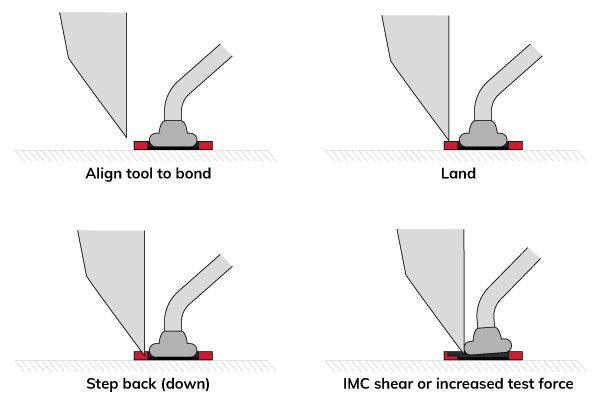Passivation layer shear
As gold ball bonding geometries reduce, so does the height of the ball bond. The thickness of the passivation layer, though, remains the same. This creates a problem when shear testing because the thickness of the passivation layer is greater than the required shear height.
Conventional shear testing results in the shear tool “scalping” the top of the ball, low test forces, and no bond strength measurement.
Passivation shear overcomes this problem by testing the bond with an appropriate shear height. After aligning the shear tool to the bond, the tool lands on the substrate (passivation layer) in the usual manner. Instead of lifting to the required shear height, it descends into the passivation layer. It then shears the ball bond. In so doing, it shears through a small portion of the passivation layer. This requires less force than the ball bond strength, and the peak force measurement remains that of the bond.
Passivation shear
Conventional shear
In a passivation shear test, the tool is sharp to attain the suitable shear height by cutting with a step down into the passivation.
Test features
- Test with thick passivation layers
- Ultra fine pitch bonds
- Low profile gold balls
- Sensor accuracy ±0.075%


